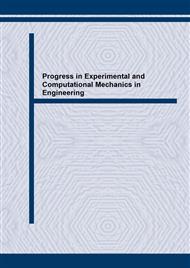[1]
Z.M Zheng, H.Zhou, H.X. Zhang, K.Z Huang and Y.L. Bai,̌Mechanics̍, Sciences and developments at the beginning of 21st century, Science publishing company, (1996), p.39 (In Chinese)
Google Scholar
[2]
J.W. Ringsberg, M.Loo-Morrey, B.L. Josefson, A.Kapoor and J.H. Beynon, International Journal of Fatigue, Vol. 22 (2000), p.205
Google Scholar
[3]
V.V. Semark and N.B. Dahoter, Laser Surface Texture, Lasers in Surface Engineering, ASM International, (1998), p.35
Google Scholar
[4]
S.W.Yu, Z.P. Duan and Y.S. Hong, Several problems of modern technique and mechanics. Modern mechanics and progress of science and technology , Aug.(1997), p.85 (In Chinese)
Google Scholar
[5]
Y.B. Zhao, L.H. Peng and Y.S. Hong, Effects on fatigue properties of alloy steel by laser remelt, Mechanics 2000, 2000.8, Beijing (In Chinese)
Google Scholar
[6]
"ABAQUS/Explicit User Manual", Version 5.8
Google Scholar
[7]
A.Melander, International Journal of Fatigue,Vol. 19 (1997), p.13. Table 1: The values of energy release rate G corresponding the MSZ rate (N/mm)
Google Scholar


